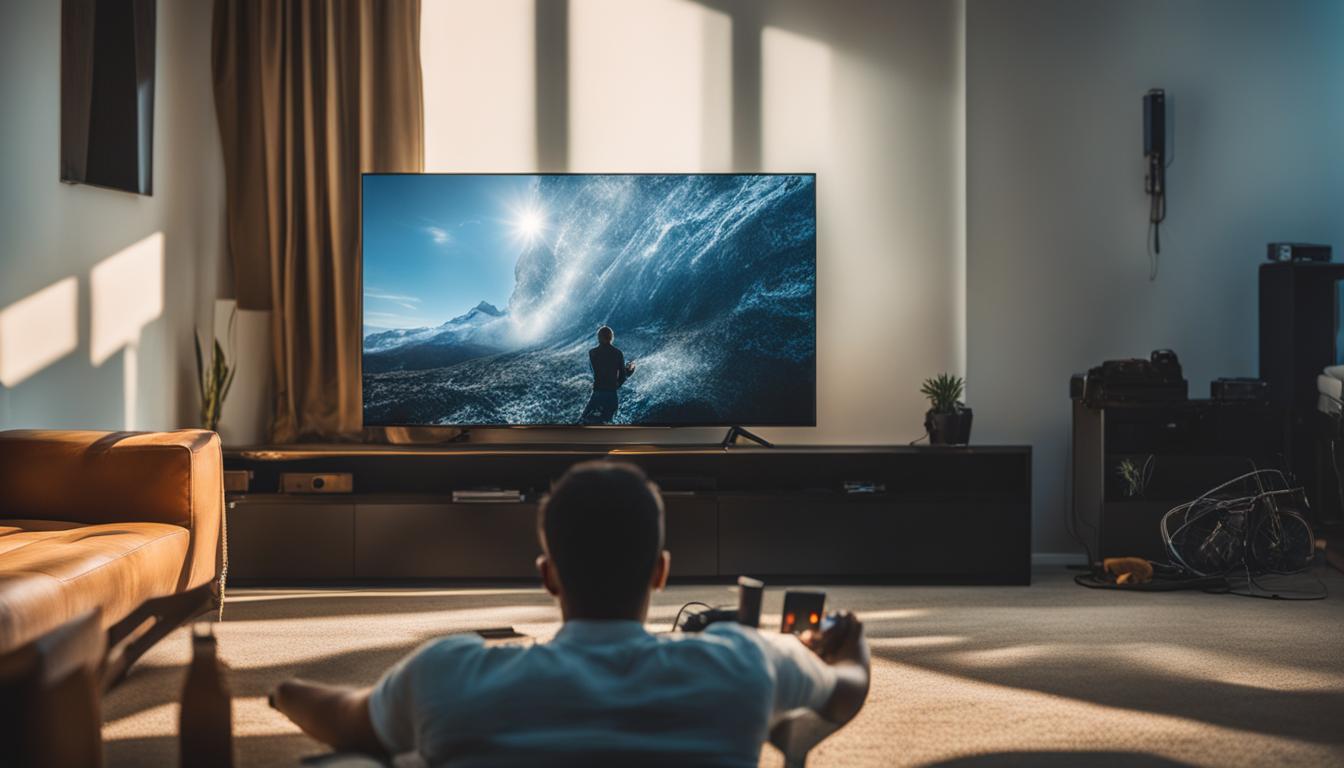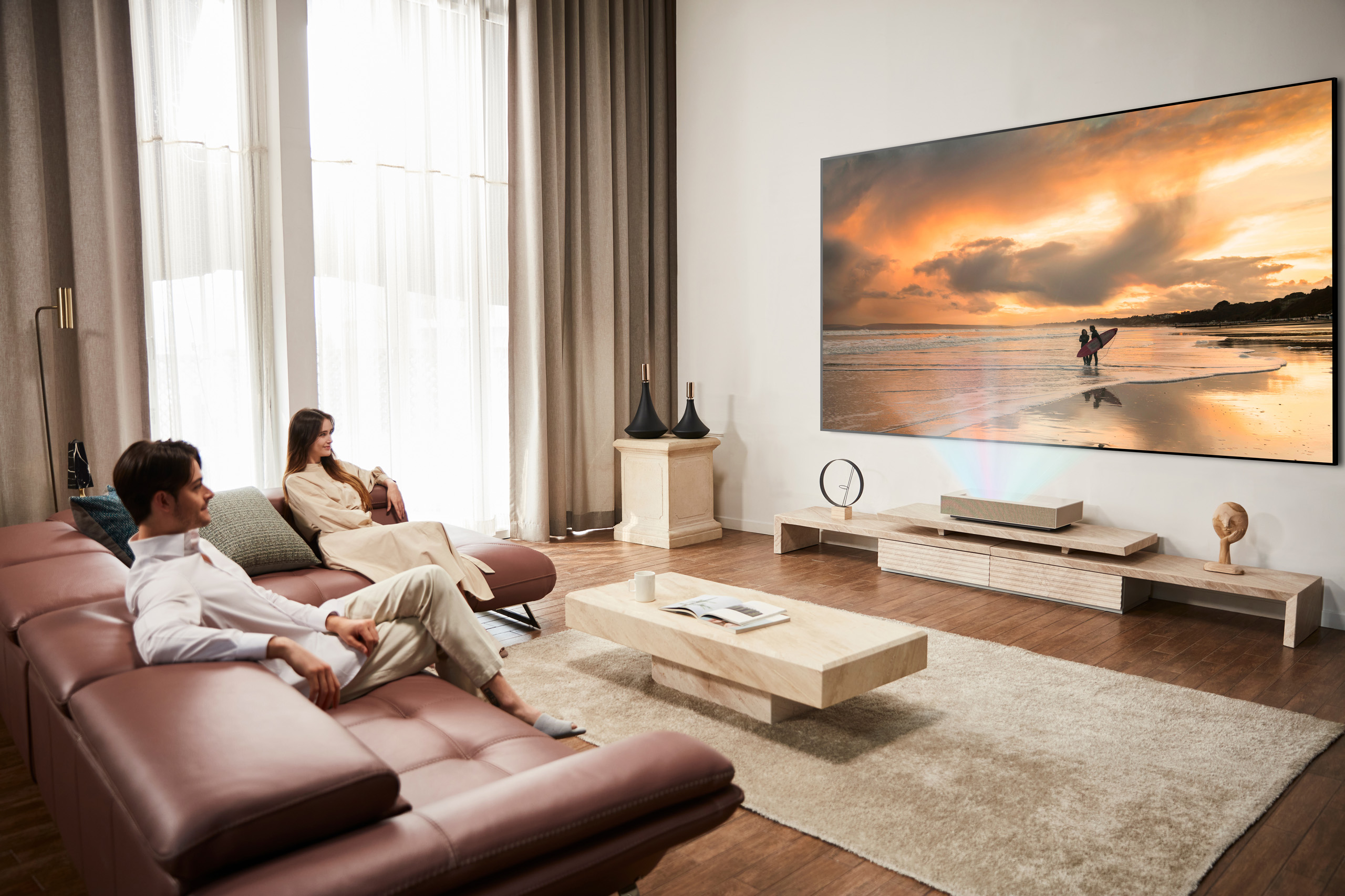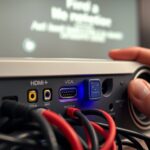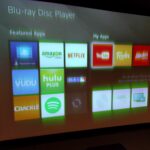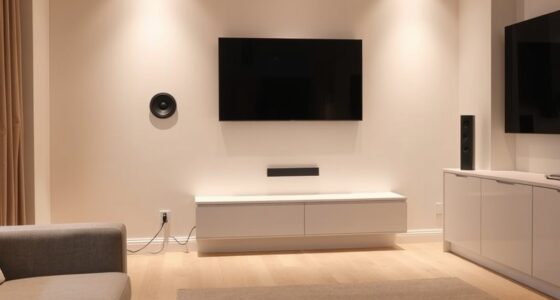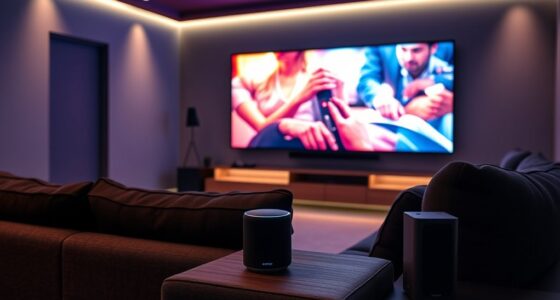Many consumers have experienced blurry or grainy pictures on their 4K TVs, wondering why their 4K TV looks pixelated. This issue can be attributed to various factors, including the content resources, hardware, and TV settings. It is important to understand the reasons behind 4K blurriness in order to address the problem effectively.
Key Takeaways:
- Blurriness on 4K TVs can be caused by lower resolution content, incorrect TV settings, unsupported cables or source devices, and inadequate bandwidth for live TV broadcasting.
- To improve 4K picture clarity, play high-quality 4K videos, adjust TV settings, ensure source devices support 4K, and check if streaming services support 4K UHD.
- The quality of the content being played on a 4K TV and proper TV settings significantly impact the sharpness and clarity of the image.
- Optimizing TV settings, such as picture mode, brightness, contrast, and color, can enhance 4K video quality and reduce blurriness.
- It is essential to ensure that source devices connected to the TV support 4K resolution to avoid blurriness.
Common Causes of Blurriness on 4K TVs
When it comes to enjoying the stunning visuals of your 4K TV, nothing is more frustrating than experiencing blurry images. Understanding the common causes of blurriness can help you troubleshoot and improve your 4K TV viewing experience.
One of the primary reasons why your 4K TV may appear blurry is due to the content you’re watching. If you’re viewing content with a resolution lower than 1080p or 4K, the image may not be optimized for your high-resolution display. Ensure that you’re accessing and playing content that is specifically designed for 4K resolution to enjoy the sharpest and clearest visuals.
Another important factor to consider is your TV settings. Incorrect settings for HD or UHD content can lead to blurriness on your 4K TV. Take the time to review and adjust your TV settings, such as picture mode, brightness, contrast, and sharpness, to ensure they are optimized for 4K viewing.
| Common Causes of Blurriness on 4K TVs | Solutions |
|---|---|
| Watching content with a resolution lower than 1080p or 4K | Access and play content specifically designed for 4K resolution |
| Incorrect TV settings for HD or UHD content | Review and adjust TV settings for optimal 4K viewing |
| Using a cable that doesn’t support 4K | Use high-quality HDMI cables that support 4K resolution |
| Connecting source devices that don’t support 4K | Ensure your source devices are compatible with 4K resolution |
| Insufficient bandwidth for live TV broadcasting | Ensure you have a strong and stable internet connection for streaming 4K content |
Additionally, the cables and source devices you use can also contribute to blurriness on your 4K TV. Using a cable that doesn’t support 4K resolution or connecting source devices that don’t support 4K can degrade the image quality. Invest in high-quality HDMI cables that can handle 4K resolution and ensure that your source devices are compatible with 4K output.
Lastly, inadequate bandwidth for live TV broadcasting can result in a blurry 4K viewing experience. Make sure you have a reliable and high-speed internet connection to support the streaming of 4K content without buffering or pixelation.
Solutions to Improve 4K TV Blurriness
Now that we understand the common causes of blurriness on 4K TVs, let’s explore some solutions to enhance the picture clarity and improve your viewing experience. By following these steps, you can make the most out of your 4K TV and enjoy the stunning visuals it has to offer.
Playing High-Quality 4K Content
One of the simplest ways to enhance the clarity of your 4K TV is to ensure you are playing high-quality 4K content. Look for videos and movies specifically labeled as 4K, as they are optimized for your TV’s resolution. Streaming services like Netflix, Amazon Prime Video, and Disney+ offer a wide range of 4K content that you can enjoy.
If you have a collection of lower-resolution videos, you can also try upscaling them to 4K. While this won’t magically improve the quality to true 4K, it can help reduce blurriness and enhance the overall sharpness of the image.
Adjusting TV Settings Properly
Another crucial step in improving 4K picture clarity is to ensure that your TV settings are properly adjusted. Take some time to explore the picture settings on your TV and make adjustments based on your preferences and the manufacturer’s recommendations.
Key settings to pay attention to include brightness, contrast, sharpness, and color. Each TV model may have different terminology for these settings, but they generally control the overall picture quality. By finding the right balance, you can achieve a sharper and more vibrant image on your 4K TV.
Ensuring Source Devices Support 4K
It is important to ensure that the devices you connect to your 4K TV support 4K resolution. If your Blu-ray player, gaming console, or streaming device does not support 4K, the videos or games you play may appear blurry or pixelated on your television.
Check the specifications of your devices and make sure they are capable of delivering 4K content. If necessary, consider upgrading your devices to fully take advantage of the capabilities of your 4K TV.
| Common Solutions to Improve 4K TV Blurriness |
|---|
| Play high-quality 4K content |
| Upscale lower-resolution videos to 4K |
| Adjust TV settings properly |
| Ensure source devices support 4K |
By following these solutions, you can enhance the picture clarity on your 4K TV and enjoy a more immersive and visually stunning viewing experience. Remember to regularly update your devices and stay up to date with the latest technology advancements to ensure optimal performance with your 4K TV.
Importance of High-Quality Content for 4K TVs
When it comes to enjoying the full potential of your 4K TV, the quality of the content being played is paramount. Watching low-resolution videos on a high-resolution screen can result in a decrease in picture quality, leading to image blurriness. To truly enhance the sharpness and clarity of the image on your 4K TV, it is crucial to prioritize high-quality 4K content.
By streaming or downloading high-quality 4K videos, you can ensure that you are making the most of your 4K TV’s capabilities. High-quality content not only provides a more immersive viewing experience but also showcases the intricate details and vibrant colors that 4K resolution is known for. Whether it’s a visually stunning movie or a breathtaking nature documentary, high-quality 4K content can truly bring your 4K TV to life.
“Watching low-resolution videos on a high-resolution screen can result in a decrease in picture quality, leading to image blurriness.”
It’s also important to consider the source of your content. Ensuring that the original source material is of good quality can significantly impact the sharpness of the image on your 4K TV. Whether you’re streaming from a reputable online platform or using physical media, be sure to choose content that is known for its high standards in resolution and visual fidelity.
Furthermore, keep in mind that not all content is created equal. Some streaming services and video platforms may offer 4K content, but the quality may vary. Take the time to research and choose platforms that prioritize high-quality 4K streaming to ensure you are getting the best possible picture on your 4K TV.
Table: Comparison of Different Content Sources for 4K TVs
| Content Source | Quality of 4K Content | Availability |
|---|---|---|
| Streaming Service A | Excellent | Wide selection of 4K content |
| Streaming Service B | Good | Limited 4K content library |
| Physical Media (Blu-ray) | Excellent | Dependent on availability and release |
| Online Video Platform | Varies | Quality may differ between creators |
As the table shows, different content sources offer varying levels of 4K content quality and availability. Choosing the right source can ensure that you are consistently enjoying high-quality content on your 4K TV, optimizing its performance and providing you with a superior viewing experience.

Optimizing TV Settings for 4K Viewing
When it comes to enjoying the full potential of your 4K TV, properly optimizing the TV settings is paramount. By making the right adjustments, you can significantly enhance the video quality and reduce blurriness on your screen. Let’s take a look at the key settings you should focus on to optimize your 4K viewing experience.
Picture Mode and Brightness
Start by selecting the appropriate picture mode for your 4K TV. Most TVs offer preset modes like Standard, Cinema, and Sports. Experiment with these modes to see which one provides the best color reproduction and sharpness for your content. Additionally, adjusting the brightness level can help improve the overall image quality, ensuring that your 4K videos appear crisp and clear.
Contrast, Sharpness, and Color
Next, fine-tune the contrast, sharpness, and color settings on your TV. Increasing the contrast can enhance the details and depth of your 4K videos, while adjusting the sharpness can make the edges of objects appear more defined. Additionally, adjusting the color settings can help achieve accurate and vibrant colors, further enhancing the overall visual experience.
Motion Smoothing and Local Dimming
Motion smoothing and local dimming are advanced features that many 4K TVs offer. Motion smoothing, also known as motion interpolation, can reduce motion blur during fast-action scenes. On the other hand, local dimming can improve contrast by dimming or brightening specific areas of the screen. Experiment with these settings to find the right balance and reduce blurriness in your 4K videos.
| Setting | Optimal Value |
|---|---|
| Brightness | Adjust to desired level without causing loss of detail |
| Contrast | Increase for more vibrant images |
| Sharpness | Adjust to avoid over-sharpening or softening of the image |
| Color | Tweak to achieve accurate and vibrant colors |
To summarize, optimizing your TV settings for 4K viewing can significantly enhance the video quality and reduce blurriness. By adjusting picture mode, brightness, contrast, sharpness, color, motion smoothing, and local dimming based on your preferences, you can create a more immersive and visually pleasing 4K experience.
Ensuring Source Devices Support 4K
One of the common causes of blurriness on a 4K TV is the lack of support from source devices. If your source devices are not capable of decoding 4K videos, it can result in a blurry display on your TV. To troubleshoot this issue, it is important to check the compatibility of your source devices with 4K resolution.
Start by reviewing the specifications of your source devices, such as media players, gaming consoles, or streaming devices, to ensure they support 4K resolution output. Look for the 4K Ultra HD or UHD compatibility in the device specifications. If your devices do not support 4K, you may need to upgrade to devices that are capable of delivering 4K content.
In addition to the source devices themselves, it’s also important to consider the cables you are using to connect your devices to the TV. Make sure you are using HDMI cables that are capable of transmitting 4K signals. Older HDMI cables may not support the bandwidth required for 4K resolution, resulting in a degraded image quality.
By ensuring that your source devices support 4K resolution and using compatible cables, you can minimize blurriness and enjoy a clear and sharp image on your 4K TV.
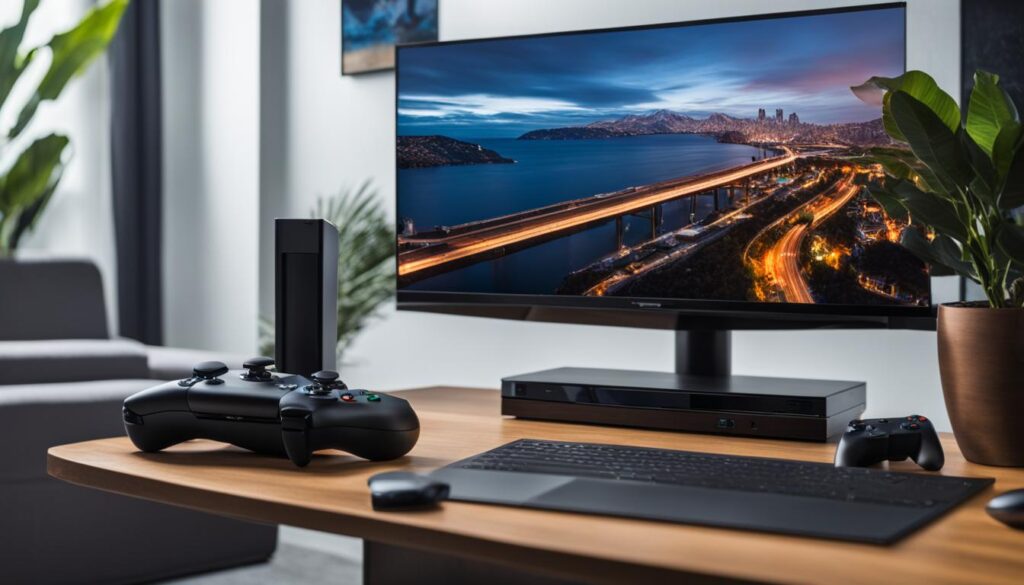
Table: Compatible Source Devices for 4K Resolution
| Device | 4K Compatibility |
|---|---|
| Media Players | Check specifications for 4K support |
| Gaming Consoles | Look for models with 4K output capabilities |
| Streaming Devices | Verify if the device supports 4K streaming |
Bandwidth Requirements for 4K TV Broadcasting
When it comes to broadcasting 4K shows on your television, having sufficient bandwidth is crucial for ensuring a clear and smooth viewing experience. While most live TV broadcasts are typically in 720p or 1080p, there are now 4K shows available that offer an enhanced level of detail and clarity. However, to fully enjoy these high-resolution shows, it is important to have a strong network connection that can support the increased bandwidth requirements.
For IPTV streaming, where shows are delivered over the internet, the video resolution automatically adjusts based on the network condition. This means that if you have a stable and robust internet connection, you can expect to receive a high-quality 4K stream without any blurriness or buffering issues. On the other hand, if your network connection is weak or unstable, it may not be able to handle the demands of 4K streaming, resulting in a degraded picture quality.
Bandwidth Requirements for 4K Streaming
To ensure a smooth streaming experience for 4K content, it is recommended to have a minimum internet speed of 25 Mbps. This allows for the efficient transmission of large amounts of data required for streaming high-resolution videos. Keep in mind that this is the minimum requirement, and if you want to enjoy the best possible picture quality, a faster internet connection is always preferable.
It’s worth noting that streaming platforms like Netflix and Amazon Prime Video often require even higher bandwidth for streaming 4K content. Netflix, for example, recommends a minimum connection speed of 25 Mbps for Ultra HD streaming, while Amazon Prime Video suggests a speed of 15 Mbps for 4K streaming. These recommendations are in place to ensure optimal video quality and reduce the chances of blurriness or buffering.
| Resolution | Recommended Minimum Internet Speed |
|---|---|
| 720p (HD) | 5 Mbps |
| 1080p (Full HD) | 10 Mbps |
| 4K (Ultra HD) | 25 Mbps |
By ensuring that your internet connection meets the recommended minimum speed for 4K streaming, you can optimize the video quality and prevent any blurriness or pixelation on your 4K TV. Additionally, it’s always a good idea to check with your internet service provider to inquire about any available upgrades or packages specifically designed for high-quality streaming.

Conclusion
In conclusion, the blurriness on your 4K TV can be attributed to various factors. Understanding the causes behind 4K blurriness is crucial in order to address the problem effectively.
Common causes of blurriness on 4K TVs include watching content with a resolution lower than 1080p or 4K, incorrect TV settings for HD or UHD content, using a cable that doesn’t support 4K, connecting source devices that don’t support 4K, and insufficient bandwidth for live TV broadcasting.
To improve the blurriness on your 4K TV, we recommend playing 4K videos or downloading high-quality 4K content, adjusting the TV settings properly, ensuring source devices support 4K, and checking if streaming services support 4K UHD. Additionally, prioritizing high-quality content and optimizing TV settings can greatly enhance the sharpness and clarity of the image on your 4K TV.
By taking these steps and ensuring a strong network connection, you can enjoy a better viewing experience with improved picture clarity on your 4K TV.
FAQ
Why does my 4K TV look blurry?
The blurriness on your 4K TV can be caused by various factors, such as low-resolution content, incorrect TV settings, incompatible cables or source devices, and insufficient bandwidth for live TV broadcasting.
How can I improve the blurriness on my 4K TV?
To improve the blurriness on your 4K TV, you can try playing 4K videos or downloading high-quality 4K content, upscaling 1080p to 4K, adjusting the TV settings properly, ensuring source devices support 4K, and checking if streaming services support 4K UHD.
Why is high-quality content important for 4K TVs?
The quality of the content being played on a 4K TV plays a crucial role in the sharpness and clarity of the image. Watching low-resolution videos can result in a decrease in picture quality on a 4K TV. It is recommended to prioritize high-quality 4K content to enhance the sharpness of the image.
How can I optimize the TV settings for 4K viewing?
To optimize the TV settings for 4K viewing, you can adjust picture mode, brightness, backlight, contrast, sharpness, color, hue/tint, color temperature/tone, motion smoothing/interpolation, and local dimming/contrast based on the manufacturer’s recommendations. These adjustments can help enhance the 4K video quality and reduce blurriness.
How can I ensure that my source devices support 4K?
To ensure that your source devices support 4K, you can check the specifications or user manual of the devices. If the devices cannot decode 4K videos, the picture quality on the TV may suffer. Checking the compatibility of the source devices with 4K resolution is crucial in maintaining a clear and sharp image on the 4K TV.
What bandwidth requirements are needed for 4K TV broadcasting?
Broadcasting 4K shows require sufficient bandwidth to ensure a clear and smooth viewing experience. While most live TV broadcasts may be in 720p or 1080p, some 4K shows are available. For IPTV streaming, a strong network connection is necessary as the video resolution automatically adjusts based on the network condition.
